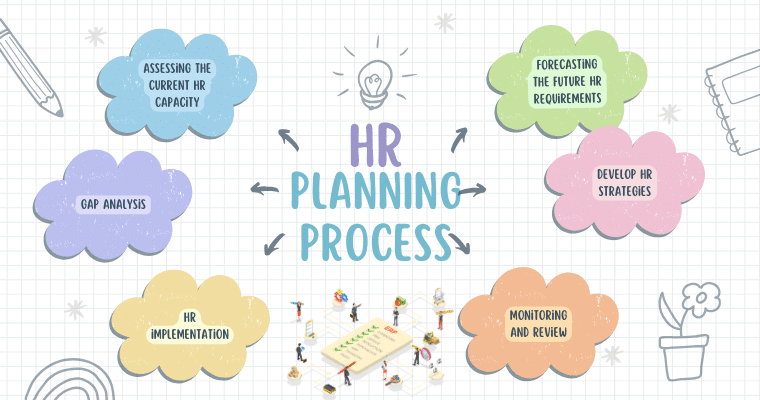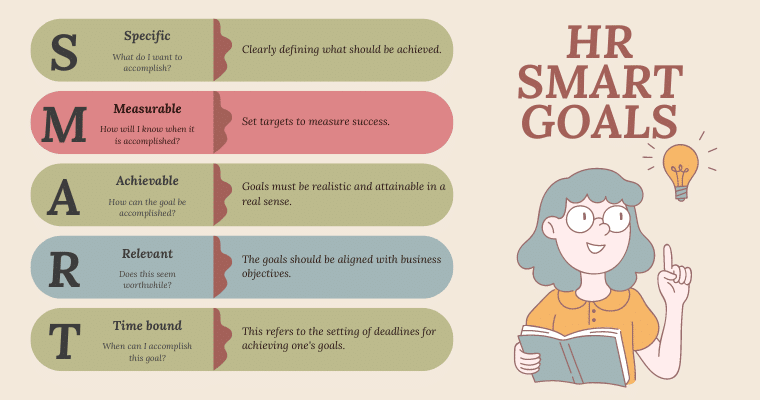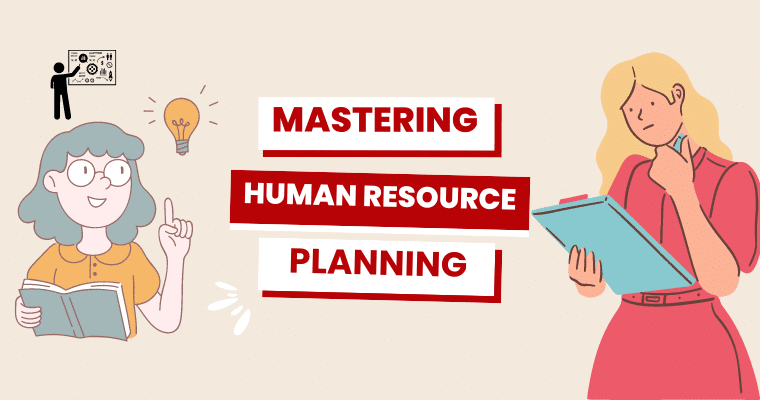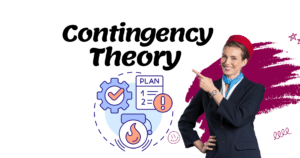Human Resource planning, is important to ensure that an organization has the right number of employees with the right skills at the right time. Effective HR planning will align staff with the business’s goals, leading down the continuing pathway of organizational growth. This article will define the HR Planning process, debate how the goals should be determined, list all of the major components of an effective goal-setting phase, and analyze the last steps and stages in HR planning. Here, we will look into the strategic human resource plan, human resource planning software, and the steps implicated in it.
What is HR Planning?
Basically, HR planning is the process of forecasting the future human resource needs of an organization and determining how to meet those needs, including the identification of skills and competencies required, analysis of the workforce, and development of strategies to bridge the gap between the current workforce status and where it would be in future.
The HR Planning Process
The basic steps in the HR planning process can be grouped into the following activities:

- Assessing the Current HR Capacity: Review the qualities of the current employees, skills, abilities, and capabilities.
- Forecasting the Future HR Requirements: Prepare a business forecast concerning business plans and goals, market trends, and organizational growth and its implications on the HR process; determine future requirements.
- Gap Analysis: Prepare a gap analysis based on current HR capacity and future HR requirements.
- Develop HR Strategies: Formulate strategies to fill the gaps found in the workforce by way of recruitment, training, development, and retention.
- HR Implementation: Put into practice those planned strategies and plans.
- Monitoring and Review: Regularly evaluate the implementation of HR strategies and take steps to correct deviations as needed.
What is the Final Step in the HR Planning Process?
The final step of the HR planning process is monitoring and evaluating, which includes tracking progress. The HR strategies or plans will need periodic review concerning their progress. Two steps are as follows:
- Effectiveness Analysis: You should measure the effect that HR initiatives create during the time of setting goals.
- Adjusting Strategies: Strategies will be adjusted based on the evaluation results, as the need arises to ensure continuous improvement.
How Should Goals Be Determined in HR Planning?
SMART Goals setting in HR planning simply means setting human resource objectives together with the strategy. The goals ought to be;

- Specific: Clearly defining what should be achieved.
- Measurable: Set targets to measure success.
- Achievable: Goals must be realistic and attainable in a real sense.
- Relevant: The goals should be aligned with business objectives.
- Time-bound: This refers to the setting of deadlines for achieving one’s goals.
Strategic HR Planning
It is the process where human resource strategy is integrated with the long-term objectives of the organization. The various steps are as follows:
- Environment Scanning: This involves both analysis of external factors and internal to an organization that impacts human resource needs.
- Workforce Planning: Forecasting future workforce requirements.
- Talent Management: Development of strategies to attract and retain talent.
- Succession Planning: Identification and development of future leaders. quaint reports to reflect the effectiveness of HR strategies.
HR Planning Software
This software helps in preparing human resources planning by providing such tools as data analysis for:
- Data analysis: Through the analysis of data about the workforce in making informed decisions.
- Forecasting: Estimation of future HR requirements in different scenarios.
- Tracking: Monitor the employees’ progress and performance achieved toward the objectives.
- Reporting: Enable reports of the results so that the impact of the HR strategies can be measured.
What is the Third Stage in HR Planning?
The third step in the planning process of HR is to Conduct a Gap Analysis. This comprises:
- Determining Gaps: The stage of determining the gap existing between the current HR capacity and future HR requirements.
- Identify Causes: Understand why these gaps exist.
- Prioritize gaps: Decide first gaps
Examples of HR Planning in Major Companies
- Apple:
Apple focused on building its innovative culture and binding skilled talent. They do strategic HR planning to align the workforce with company growth in technology and services.
- Amazon:
The use of HR planning by Amazon helps handle the huge and diversified workforce effectively and efficiently. They strive to attain continued learning and development to respond to changing requirements in e-commerce and cloud computing markets.
- Nike:
For Nike, it involves a work environment that is dynamic and inclusive. Similarly, It focuses on talent development and lays down leadership succession plans to sustain market leadership.
- Walmart:
Walmart incorporates HR planning to maintain businesses internationally. They focus on efficiency, diversity, and employee engagement as a source of generate for their retail business.
Conclusion
HR planning is the proper process to ensure that an organization has all the people it should to work toward the realization of its goals. An organization will be able to successfully manage its human resources through a structured HR processes, goal setting of specific and measurable results, continuous monitoring strategies, and adjustment to attain successful business. From Apple to Amazon, and Nike to Walmart, proper planning of human resources ensures the competitive edge required in the dynamic environment of contemporary business.
Frequently Asked Question (FAQs)
1. What is HR planning?
It is the process by which an organization projects its future human resource needs and determines how they will be met.
2. How should goals be determined in HR planning?
Goals need to be specific, measurable, achievable, relevant, and timely, and also aligned with the organization’s overall strategy.
3. What are the key components of an effective goal-setting phase?
The key elements are a clear vision and mission statement, involvement of stakeholders, assessment of resources, action plan development, and performance metrics.
4. What is strategic HR planning?
Essentially, It means aligning the human resources strategies with the long-term goals of the organization.
5. What are the steps in the HR Planning Process?
The essential steps includes:
- Assessing Current HR Capacity
- Forecasting HR Requirements
- Conducting a Gap Analysis
- Developing HR Strategies
- Implementing HR Plans
- Monitoring and Evaluating
References
- Johnson, G., Scholes, K., & Whittington, R. (2008). Exploring Corporate Strategy: Text and Cases. Pearson Education.
- Bodie, Z., Kane, A., & Marcus, A. J. (2014). Essentials of Investments. McGraw-Hill Education.
- Malkiel, B. G. (2003). A Random Walk Down Wall Street: The Time-Tested Strategy for Successful Investing. W. W. Norton & Company.




